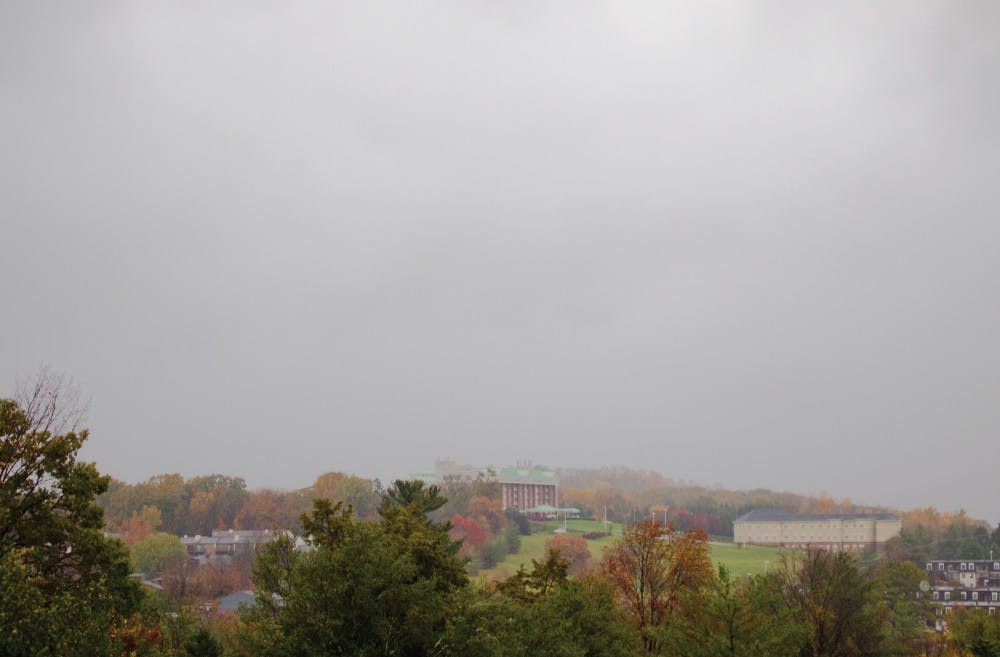Although Charlottesville may not have seen the worst of this year’s “superstorm,” Hurricane Sandy continues to ravage the Northeast with high winds and heavy rain. It’s not unusual for large hurricanes to form this time of year — according to the National Hurricane Center, Atlantic hurricane season is from June 1 to Nov. 30 — so what makes this particular storm so destructive?
Hurricanes form from deep cumulonimbus clouds, which vacuum up warm water from tropical oceans, creating a column of moist air, much lighter than the surrounding atmosphere. As these clouds begin to form, air flows from the high pressure atmosphere into the low-pressure column. Once the air begins moving into the convective region, the earth’s rotation causes the air to rotate, creating a large system powered by angular momentum.
Hurricane Sandy was no different, said G.D. Emmitt, president and senior scientist at Simpson Weather Associates, Inc. and scholar-in-residence for the department of environmental sciences. “Sandy was born in the tropics over warm water just like any other ordinary tropical storm,” Emmitt said in an email.
The unusual strength of Sandy came from a high-pressure, low-temperature system from Canada combining with the low-pressure, moist air from the hurricane to form a massive amount of energy.
Imagine a container of oil and water, said Michael Garstang, Emeritus research professor for the department of environmental sciences.
“If you combine oil and water in a container, the oil will sit on top of the water,” Garstang said. “If you tilted the combination, the surface would slope. The return from that slope to a level plane represents the conversion from potential energy to kinetic energy.”
In atmospheric terms, the different air densities — with cold air as the denser water-like substance in the analogy and the warm, hurricane air representing the oil — form the sloping surface. The movement converts the potential energy into the destructive winds experienced in the past few days.
Although the chances of such an interaction are slim, it is not necessarily uncommon, Garstang said. “Hurricane Camille was essentially [this] kind of storm, though nowhere near on this scale,” he said. “In that case, there was a cold front and a mid-latitude system which produced an enormous amount of water.”
The high-pressure system over Canada and the Northeast, called a “blocking high,” forced Sandy to move westward, causing the hurricane to directly interact with the cold front coming from the west. “Without the blocking high to the northeast, Sandy probably would have just peeled off from the Outer Banks and headed out into the Atlantic,” Emmitt said. The high-pressure area acted as a wall right off the northeast coast pushing Sandy westward, explaining why places such as Virginia Beach received little damage compared to New York and New Jersey.
Both Emmitt and Garstang believe the worst of the storm is past us. “If [a hurricane] pulls in cold air, it essentially kills the convection,” Garstang said. “As soon as that happens, you’re stalling the engine of the machine, and once you’ve cut off that source of energy, the hurricane dies.”
Recent studies have questioned whether climate change is increasing the number and strength of hurricanes, but a 2005 study by Roger Pielke, Jr., son of Roger Pielke, a former professor in the University department of environmental science, concluded “claims of linkages between global warming and hurricane impacts are premature.”
But climate change still has the ability to affect the number and strength of hurricanes with an increase in ocean surface temperature, Garstang said. “A change of half a degree or one degree [in the ocean’s surface temperature] encompasses an enormous amount of energy, far more energy than humans have created in all of history,” he said. “But this is still merely a theory. Any individual hurricane is just a metaphorical blip on the radar, we would need many years of accumulated evidence to support a claim like that.”







